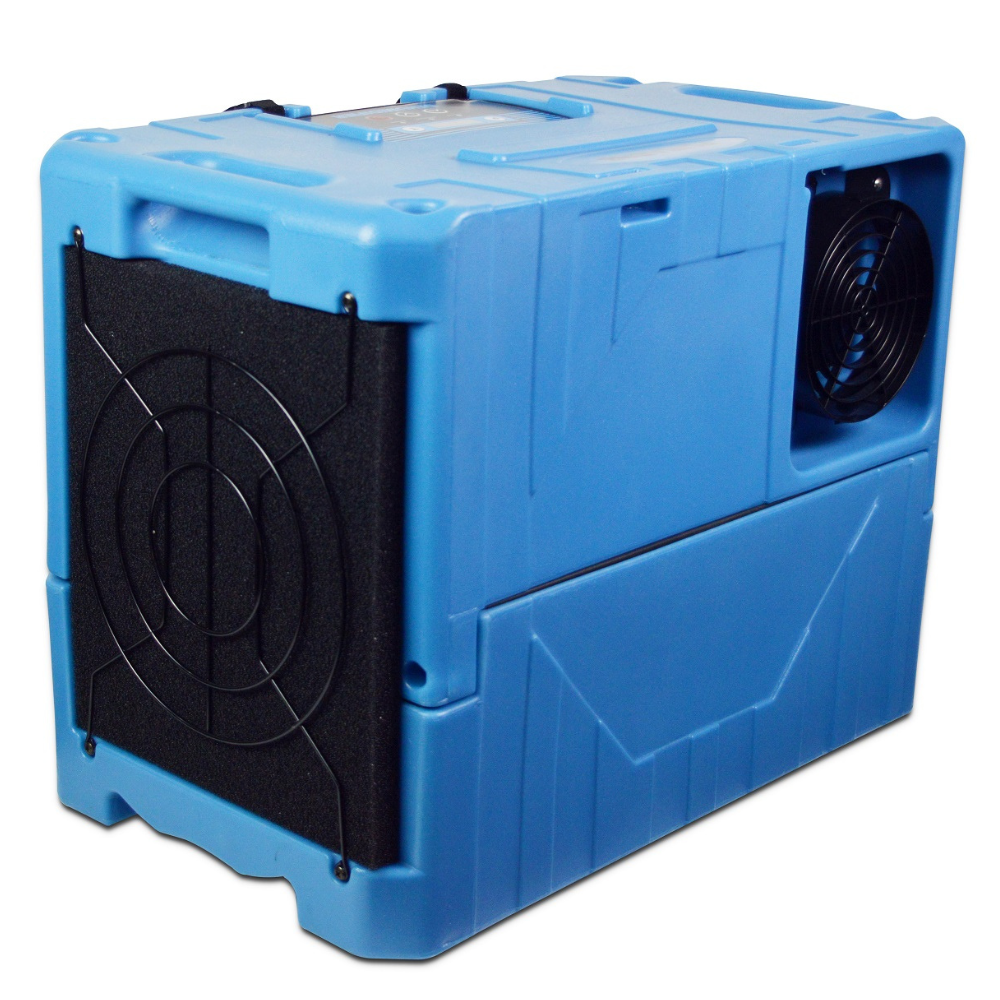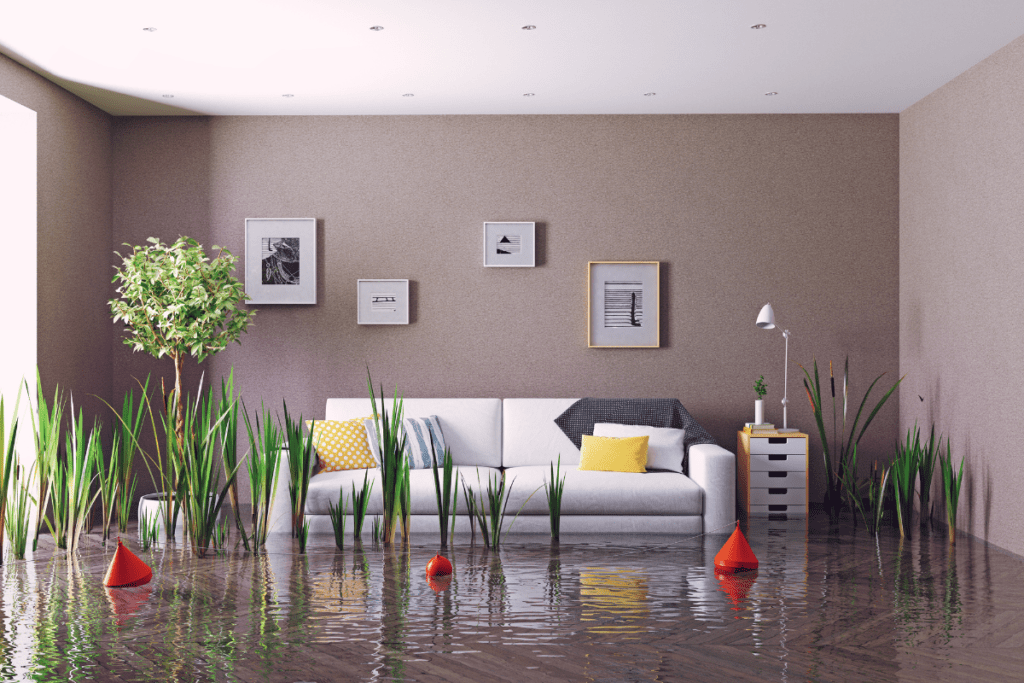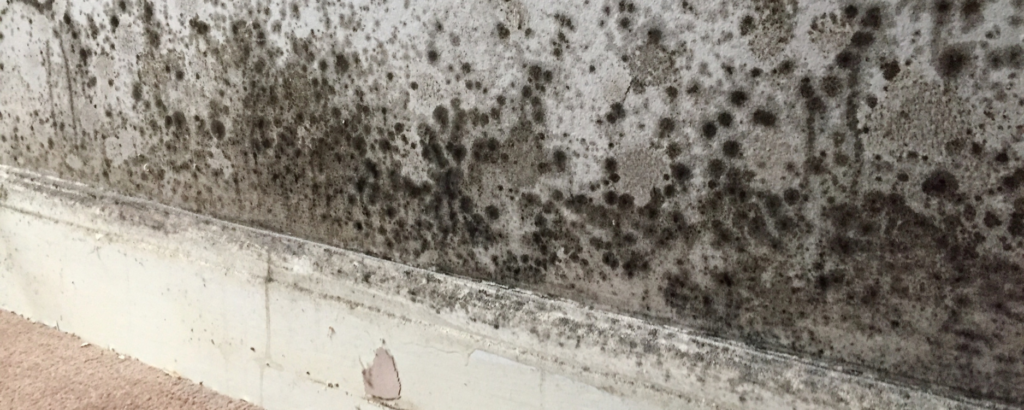
Top 30 Frequently Asked Questions About Drying and Dehumidifying Wet Buildings
Top 50 Frequently Asked Questions About Drying and Dehumidifying Wet Buildings
By: Brothers Equipment And Supply
When it comes to maintaining the integrity and safety of buildings, dealing with moisture is crucial. Wet buildings can lead to a host of problems, including structural damage, mold growth, and health issues for occupants.
Understanding how to effectively dry and dehumidify wet buildings is essential for homeowners, property managers, and construction professionals.
This article addresses the top 50 frequently asked questions about drying and dehumidifying wet buildings, providing comprehensive answers and practical solutions.
Let’s get right into it.
1. What causes buildings to become wet?
Buildings can become wet due to a variety of reasons, including:
Leaking roofs and walls: Damaged or poorly installed roofing and walls can allow rainwater to seep into the building.
Plumbing leaks: Broken or faulty plumbing systems can cause water to leak inside the building.
Flooding: Natural disasters such as floods can inundate buildings with water.
Condensation: Poor ventilation and insulation can lead to condensation build-up inside walls and ceilings.
Ground moisture: Rising damp from the ground can affect the foundation and lower parts of the building.
2. How does moisture affect building structures?
Excess moisture can have several detrimental effects on building structures:
Structural damage: Water can weaken building materials like wood and concrete, leading to structural instability.
Mold growth: Moist environments are perfect breeding grounds for mold, which can further damage materials and pose health risks.
Rust and corrosion: Metal components within the building can rust and corrode when exposed to moisture.
Decay: Organic materials like wood can decay, compromising the structural integrity.
Aesthetic damage: Moisture can cause stains, peeling paint, and other unsightly issues.

3. What are the signs of excess moisture in a building?
Identifying excess moisture early can prevent significant damage. Common signs include:
Damp spots and stains: Visible water stains on walls, ceilings, or floors.
Musty odors: A persistent musty smell indicates the presence of mold or mildew.
Peeling paint or wallpaper: Moisture can cause paint to bubble and peel or wallpaper to detach.
Condensation: Excessive condensation on windows, walls, or other surfaces.
Visible mold: Mold growth can appear as black, green, or white patches on surfaces.
Warping: Wood and other materials may warp or buckle due to moisture absorption.
4. How can I detect moisture problems in my building?
Detecting moisture problems early can save you from costly repairs. Here are some methods:
Visual inspection: Regularly inspect your building for signs of moisture, such as stains, mold, or peeling paint.
Moisture meters: These devices measure the moisture content in materials and can help identify hidden dampness.
Infrared cameras: Thermal imaging cameras can detect temperature variations that indicate moisture presence.
Hygrometers: These measure the humidity levels in the air, helping to identify potential moisture issues.
Professional assessment: Hiring a professional can provide a thorough evaluation of your building’s moisture levels.
5. What are the common sources of moisture in buildings?
Moisture can enter buildings from various sources, including:
External sources: Rainwater, flooding, and groundwater can infiltrate buildings through roofs, walls, and foundations.
Internal sources: Plumbing leaks, appliance malfunctions, and indoor activities such as cooking and showering.
Condensation: Occurs when warm, moist air comes into contact with cooler surfaces, causing water to accumulate.
Ventilation issues: Poor ventilation can trap moisture inside, leading to higher humidity levels.
Building materials: Some materials, like concrete, can absorb moisture from the ground and release it into the building.
6. How can I prevent moisture from entering my building?
Preventing moisture entry involves a combination of proper maintenance and building practices:
Roof maintenance: Regularly inspect and repair roofing to prevent leaks.
Seal openings: Ensure that windows, doors, and other openings are properly sealed.
Proper drainage: Ensure that the building’s surroundings have proper drainage to direct water away.
Insulation: Proper insulation can prevent condensation by keeping surfaces warm.
Ventilation: Adequate ventilation helps reduce indoor humidity and moisture accumulation.

7. What is the difference between drying and dehumidifying?
Drying and dehumidifying are related but distinct processes:
Drying: Refers to the removal of visible water from surfaces and materials. This can be achieved through methods like mopping, vacuuming, or using fans.
Dehumidifying: Involves reducing the moisture content in the air. Dehumidifiers extract moisture from the air, lowering humidity levels and preventing further moisture-related problems.
8. Why is dehumidification important for buildings?
Dehumidification is crucial for several reasons:
Prevents mold growth: Lower humidity levels make it harder for mold and mildew to thrive.
Protects materials: Reduces the risk of moisture damage to building materials.
Improves air quality: Lower humidity levels can improve indoor air quality and reduce health risks.
Comfort: A dehumidified environment feels more comfortable and reduces the risk of respiratory issues.
Energy efficiency: Lower humidity can improve the efficiency of heating and cooling systems.
9. What are the different methods of drying wet buildings?
There are various methods to dry wet buildings, each suitable for different situations:
Air drying: Natural ventilation by opening windows and doors to promote airflow.
Mechanical drying: Using fans, blowers, or heaters to accelerate the drying process.
Desiccant dehumidifiers: These devices absorb moisture from the air using desiccant materials.
Refrigerant dehumidifiers: Use cooling coils to condense and remove moisture from the air.
Heat drying: Applying heat to wet materials to evaporate moisture.
10. How do dehumidifiers work?
Dehumidifiers operate by extracting moisture from the air. Here’s how they work:
Intake: Air is drawn into the dehumidifier.
Cooling coils: The air passes over cooling coils, causing moisture to condense.
Collection: The condensed water is collected in a reservoir or drained away.
Reheating: The dry air is reheated and released back into the room.
Circulation: This process continues, gradually lowering the humidity level.
11. What types of dehumidifiers are best for drying buildings?
Several types of dehumidifiers can be used to dry buildings, each with its advantages:
Portable dehumidifiers: Suitable for small spaces and localized drying.
Whole-house dehumidifiers: Integrated into HVAC systems to control humidity throughout the building.
Industrial dehumidifiers: High-capacity units designed for large-scale or severe moisture problems.
Desiccant dehumidifiers: Ideal for low-temperature environments and heavy-duty drying.

12. How do I choose the right dehumidifier for my building?
Choosing the right dehumidifier depends on several factors:
Size of the area: Larger areas require dehumidifiers with higher capacity.
Humidity level: Higher humidity levels need more powerful dehumidifiers.
Temperature: Desiccant dehumidifiers are better for colder environments, while refrigerant types work well in warmer settings.
Specific needs: Consider the severity of moisture problems and the specific needs of your building.
13. What are the benefits of using a dehumidifier?
Using a dehumidifier offers several benefits:
Mold prevention: Keeps mold and mildew at bay by reducing humidity levels.
Improved air quality: Reduces allergens and improves overall air quality.
Comfort: Creates a more comfortable living or working environment.
Material protection: Protects furniture, electronics, and building materials from moisture damage.
Health: Reduces the risk of respiratory issues and other health problems associated with high humidity.
14. Can I use fans to dry my building?
Fans can be used to help dry buildings, but they are often more effective when used in conjunction with other methods:
Pros: Promote air circulation, inexpensive, easy to use.
Cons: May not be sufficient for severe moisture problems, can spread mold spores if mold is present.
15. What are the pros and cons of using fans for drying?
Using fans for drying has its advantages and disadvantages:
Pros:
- Cost-effective: Fans are generally less expensive than dehumidifiers or professional services.
- Easy to use: Simple to set up and operate.
- Effective for minor issues: Good for minor moisture problems and improving air circulation.
Cons:
- Limited effectiveness: Not suitable for severe or widespread moisture problems.
- Can spread contaminants: If mold is present, fans can spread spores throughout the building.
- No humidity control: Fans do not reduce humidity levels like dehumidifiers do.
16. How long does it take to dry a wet building?
The drying time for a wet building depends on several factors:
Extent of water damage: More severe damage takes longer to dry.
Drying methods used: Advanced drying methods can significantly reduce drying time.
Building materials: Some materials, like concrete, take longer to dry than others, like wood.
Humidity levels: High humidity slows down the drying process.
Temperature: Warmer temperatures generally speed up drying.
On average, it can take anywhere from a few days to several weeks to completely dry a wet building.

17. What factors affect the drying time of a building?
Several factors can influence how long it takes to dry a building:
Water source: The type of water (clean, gray, or black) affects the drying time.
Moisture level: Higher initial moisture levels require longer drying periods.
Building materials: Different materials have varying drying rates.
Drying equipment: The efficiency and capacity of the drying equipment used.
Environmental conditions: Humidity, temperature, and ventilation all play roles in drying time.
18. How can I speed up the drying process?
To speed up the drying process, consider the following tips:
Use dehumidifiers: High-capacity dehumidifiers can quickly reduce humidity levels.
Increase ventilation: Open windows and use fans to promote air circulation.
Apply heat: Using heaters can accelerate the evaporation of moisture.
Remove wet materials: If possible, remove and replace heavily saturated materials.
Professional help: Hiring professionals with advanced drying equipment can significantly speed up the process.
19. Is it necessary to remove wet materials during the drying process?
Removing wet materials can be crucial for several reasons:
Prevent mold growth: Mold can quickly develop on wet materials, posing health risks.
Speed up drying: Removing saturated materials allows other areas to dry faster.
Prevent structural damage: Prolonged exposure to moisture can weaken structural components.
Reduce odors: Wet materials can harbor unpleasant smells that persist even after drying.
20. What materials are most susceptible to moisture damage?
Certain materials are particularly vulnerable to moisture damage:
Wood: Can warp, rot, and support mold growth.
Drywall: Absorbs water quickly and can lose structural integrity.
Carpet: Retains moisture and can develop mold and odors.
Insulation: Loses its effectiveness when wet and can harbor mold.
Metal: Can rust and corrode when exposed to moisture.

21. How can I prevent mold growth in a wet building?
Preventing mold growth involves several key steps:
Reduce humidity: Use dehumidifiers to keep humidity levels below 60%.
Improve ventilation: Ensure adequate airflow to prevent moisture build-up.
Clean and dry surfaces: Regularly clean and dry surfaces to remove moisture.
Repair leaks: Fix any leaks promptly to prevent water accumulation.
Use mold inhibitors: Apply mold inhibitors to vulnerable areas.
22. What are the health risks associated with mold?
Mold exposure can lead to various health issues, including:
Allergic reactions: Symptoms like sneezing, runny nose, and red eyes.
Respiratory problems: Asthma attacks, coughing, and difficulty breathing.
Skin irritation: Rashes and itching from contact with mold.
Infections: In rare cases, mold can cause infections, particularly in immunocompromised individuals.
Toxic effects: Some molds produce mycotoxins that can cause more severe health effects.
23. How can I safely remove mold from my building?
Safe mold removal involves careful steps to protect your health and prevent spread:
Wear protective gear: Use gloves, masks, and goggles.
Isolate the area: Seal off the affected area to prevent spores from spreading.
Use appropriate cleaners: Use commercial mold removers or a mixture of bleach and water.
Scrub surfaces: Thoroughly scrub moldy surfaces and allow them to dry completely.
Dispose of contaminated materials: Properly dispose of any materials that cannot be cleaned.
24. What are the signs of mold in a building?
Common signs of mold include:
Visible growth: Black, green, or white patches on walls, ceilings, or other surfaces.
Musty odor: A persistent, unpleasant smell often indicates mold.
Health symptoms: Respiratory issues, allergies, or skin irritation in occupants.
Water damage: Areas with previous or ongoing water damage are likely to have mold.
Discoloration: Stains or discoloration on walls, ceilings, or floors.
25. How do I know if I need professional help for mold removal?
Consider professional help if:
The affected area is large: Generally, if mold covers more than 10 square feet.
Health issues arise: If occupants experience severe health symptoms.
Hidden mold: Mold is suspected in areas that are difficult to access or inspect.
Recurrent mold: Mold returns despite previous cleaning efforts.
Complex problems: Structural damage or other complications are involved.
26. What are the costs associated with drying and dehumidifying a building?
Costs can vary widely based on factors such as:
Extent of damage: More severe damage requires more extensive and costly repairs.
Size of the area: Larger areas require more resources and time.
Equipment used: High-capacity or specialized equipment can be more expensive.
Professional services: Hiring professionals will add to the cost but can be more effective.
Materials replaced: Costs for replacing damaged materials such as drywall, insulation, and flooring.
27. Are there any DIY methods for drying a building?
DIY methods can be effective for minor moisture problems:
Use household fans: Promote air circulation to aid drying.
Open windows and doors: Increase natural ventilation.
Use dehumidifiers: Household dehumidifiers can help reduce humidity.
Remove wet materials: Promptly remove and replace any saturated materials.
Clean and disinfect: Regularly clean surfaces to prevent mold growth.
28. What are the limitations of DIY drying methods?
DIY methods have several limitations:
Limited effectiveness: May not be sufficient for severe moisture problems.
Time-consuming: DIY methods can take longer than professional services.
Risk of improper drying: Incomplete drying can lead to mold growth and further damage.
Lack of equipment: Household tools and appliances may not be powerful enough for large-scale drying.
29. How can I maintain a dry environment in my building?
Maintaining a dry environment involves ongoing efforts:
Regular inspections: Check for signs of moisture and address issues promptly.
Proper ventilation: Ensure good airflow throughout the building.
Use dehumidifiers: Regularly use dehumidifiers to control humidity levels.
Repair leaks: Fix any leaks in roofs, walls, or plumbing immediately.
Control indoor activities: Use exhaust fans when cooking or showering to reduce moisture.
30. What is the role of ventilation in preventing moisture problems?
Ventilation plays a critical role in preventing moisture problems by:
Reducing humidity: Ventilation helps lower indoor humidity levels.
Preventing condensation: Good airflow reduces the chances of condensation on surfaces.
Dispersing moisture: Ventilation helps disperse moisture, preventing it from accumulating.
Improving air quality: Proper ventilation improves overall indoor air quality.
If you have any questions about our article, “Top 50 Frequently Asked Questions About Drying and Dehumidifying Wet Buildings” or need water damage equipment contact us at sales@brothers-equipment.com or chat with us on social media.
